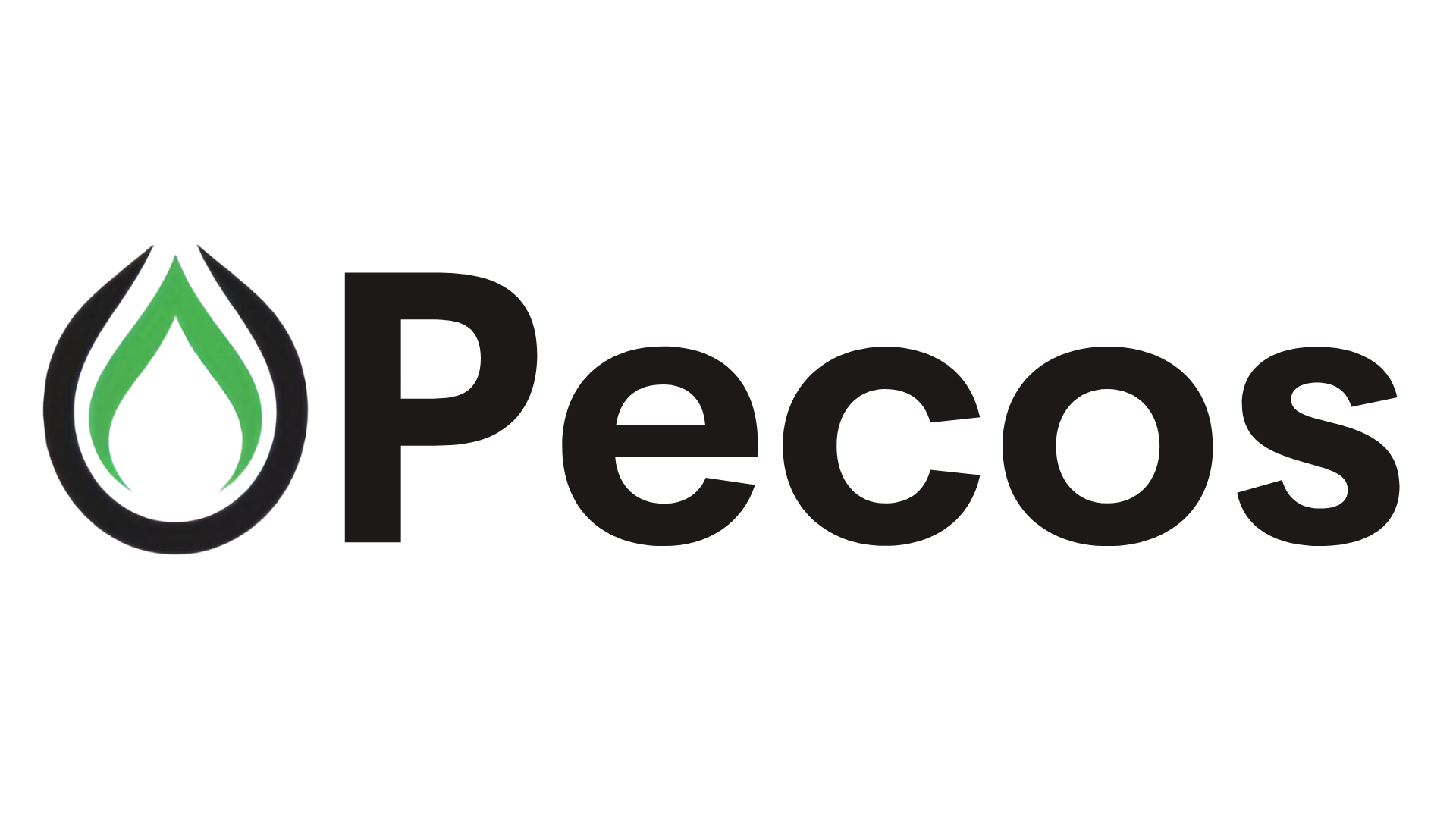Energy News Beat
Daily Standup Top Stories
Trump Administration Fast-Tracks Utah Uranium Mine, Signals Robust Push for Critical Minerals
Today, I had the privilege of visiting with Robert Bryce, (David Blackmon) Energy Transition Absurdities, and Douglas C. Sandridge about President Trump’s executive orders on nuclear energy. That podcast transcript and video will be published on Friday. We covered the great […]
Second FSRU arrives in Egypt – Why did an LNG export country now have to start importing energy?
ENB Pub Note: The update from LNGPrime.com about Egypt’s new FSRU to help with seasonal imports of LNG. I have to ask why a country that was exporting LNG is now an importer. So I […]
Cheniere gets OK to introduce fuel gas to second Corpus Christi expansion train
ENB Pub Note: The update below from LNGPrime.com on the Corpus Christi export facility is great news on the Train 2 project. I have added the total Cheniere export capabilities. Below is a breakdown of […]
Where Are Oil Prices Headed in 2025 and Beyond? Goldman Sachs’ Bearish Outlook Meets Rising Demand Well economics matters
Source: The Crude Truth Substack Oil well economics matters at all times, but it has now become the difference between profitability and incurring a loss. Goldman Sachs has doubled down on its bearish oil price […]
Highlights of the Podcast
00:00 – Intro
01:20 – Trump Administration Fast-Tracks Utah Uranium Mine, Signals Robust Push for Critical Minerals
04:38 – Second FSRU arrives in Egypt – Why did an LNG export country now have to start importing energy?
06:52 – Cheniere gets OK to introduce fuel gas to second Corpus Christi expansion train
11:31 – Markets Updates
13:34 – Where Are Oil Prices Headed in 2025 and Beyond? Goldman Sachs’ Bearish Outlook Meets Rising Demand Well economics matters
19:01 – Outro
Follow Michael On LinkedIn and Twitter
– Get in Contact With The Show –
Video Transcription edited for grammar. We disavow any errors unless they make us look better or smarter.
Michael Tanner: [00:00:00] Why Goldman Sachs is wrong yet again with their future oil price forecast next on the Energy Newsbeat podcast. [00:00:07][6.8]
Michael Tanner: [00:00:15] What’s going on, everybody? Welcome into the Wednesday, May 28, 2025 edition of the Daily Energy Newsbeat standup. Here are today’s top headlines. First up, Trump administration fast tracks Utah uranium mine signals robust push for critical minerals. Next up, second, FSRU arrives in Egypt. Why did an LNG export country now have to start importing energy? Super interesting there. Finally, Chenier gets OK to introduce fuel gas to second Corpus Christi expansion train. Stu will then toss it over to me. I will quickly cover what happened with oil and gas prices, mainly talking about the slight dip relative to Iran-U.S. Talks along with OPEC supply. And finally, I’ll end with where are oil prices heading in 2025 and beyond Goldman Sachs bearish outlook meets rising demand as well, economics matter. We will cover all that. A bag of chips guys as always I’m Michael Tanner joined by Stuart Turley where do you want to begin? [00:01:20][64.6]
Stuart Turley: [00:01:20] Let’s start with our buddy the Trump administration fast tracks Utah uranium mine signals robust push for critical minerals. Michael, this is extremely critical. I’ll tell you why. The Velvetwood mine is a bellwether for the Trump Administration’s critical mineral strategy as the U.S. Seeks to secure its supply chain and reduce the reliance on foreign adversaries. Michael, this is critical. Once operational, it’s expected to deliver and process 1.9% of the uranium needed for the U.S. On a national basis. Michael, that is important. 1.90%. You may sit there and go, oh, that’s only 1.99%, Stu. I’m like, hell yeah. That’s the first part of uranium mining processing in the U S. This is huge. I came up with this idea to write this article today after interviewing. David Blackman, Robert Bryce, and Doug Sandridge on a live podcast that will be coming out on our Energy Newsbeat Substack channel on Friday, and it was very important. Those are three other great minds, not mine, theirs, and they came up with a great point and that is uranium. Mining is critical. [00:02:40][79.8]
Michael Tanner: [00:02:41] It really is. And this is all part of the broader critical minerals agenda, Stu. And there was three or four things that were kind of listed as key initiatives, the first one being executive orders for nuclear and mineral development, the next one being permitting reform for critical minerals. The next, this one’s spicy, deep sea mining exploration. Wonder if it’s the same Ukrainian seals that got Nord Stream. They’ve got experience underwater. And finally, different trade and tariff measures. Specifically to address vulnerabilities in the critical minerals supply chain. That’s going to be headed up by Commerce Secretary Howard Lutnick. But I mean, I think the implications of this, as you talked about in the article, are, you know, pun intended critical because we need these critical minerals if we are going to eventually start insourcing. And if we really do want to go all solar, as Elon says, which we can argue with. You know, right, left, up, down, whether or not that’s a good idea. But even if we want to even have that conversation, we better know that we can be able to actually build these items in-house. [00:03:44][63.4]
Stuart Turley: [00:03:45] And I’ll tell you what, I learned an awful lot from Robert David Blackman and Doug Sandridge today about nuclear and where we’re going as it ties into this. So our readers are on the sub stack and are really enjoy that one as it comes out on Friday. But Secretary Burgum is doing a fantastic job running down the road with Secretary Chris Wright on this critical issue. But Michael, the number one problem that we have for mining in the United States is regulatory holdup, oops. And so you take a look at regulatory hold up for building nuclear. It’s the same thing, but now that president Trump’s executive order allows us to be done on federal lands with a bypass to regulatory problems. That is what I’m going to be watching for. [00:04:36][50.8]
Michael Tanner: [00:04:37] Absolutely. All right, what’s next? [00:04:38][1.0]
Stuart Turley: [00:04:38] Let’s go to the second FFS-RU arrives in Egypt. Why did an LNG export country now have to start importing energy? Michael, I’m going to ask you a question. Without knowing anything about this story, do you think it was because of green energy policies and climate change, or do you just think it’s bad management? [00:05:00][21.9]
Michael Tanner: [00:05:01] I’m going to say bad management. Egypt doesn’t strike me as somebody who is interested in soul. [00:05:06][5.0]
Stuart Turley: [00:05:06] Guess what? It is climate management. They are all in on the UN climate gig. And I didn’t see that one coming. Energy’s Egypt is heavily reliant on fossil fuels, particularly natural gas. And now Egypt is energy landscaping, accounting for 79 to 84% of their electricity generation in 2023. But now they’re having to import it and they added another import facility for LNG because they are not producing enough. Energy security starts at home. This is pretty important. [00:05:45][38.4]
Michael Tanner: [00:05:45] No, it really isn’t. And I find it fascinating really that Egypt has dove in headfirst into climate change. They, you know, with a robust amount of energy, specifically fossil fuels in their country, it’s really surprising that they’re done with. And I think it goes to show how, as you said, the policy impacts that the IEA and all these global entities do, how much it rubs up on these countries and how it really should impact from a capital allocation standpoint. Where people see investment opportunity. [00:06:17][31.7]
Stuart Turley: [00:06:18] Oh, absolutely. And what I find very fascinating is as I’m writing all these stories and looking at how tankers are being reused as a regasification unit. I did not know that regasfication units were actually tankers that have been obsolete and then re-plumbed to be a regascification unit. You pull it up onto shore, you’ve got you an import facility by redoing a panker. That’s pretty darn cool. But how it’s doing it, who’s doing it and why is why I wrote the intro to that article. [00:06:50][31.6]
Michael Tanner: [00:06:51] Absolutely. All right, what’s next? [00:06:52][0.9]
Stuart Turley:[00:06:52] Let’s go to our buddies over there at Cheniere I absolutely love Cheniere, Cheniere is a great, well run company. And you know, good leadership means good numbers and Cheniere gets the okay to introduce fuel gas to the second Corpus Christi expansion train. This is absolutely huge. The FERC granted Corpus Christi liquefaction May 6 request to introduce fuel gas to the mid-scale train 2 for the stage 3. This is important. So I added on the top of LNG prime off of our feed. But I added all the other information on the Sabine Pass, Corp, and Christie terminal and combined current capacity, and it looks like it’s 45 MTPA of LNG out of that facility. It’s pretty important. That is a lot of trading bucks for President Trump offsetting some of his trade balance. [00:07:53][60.6]
Michael Tanner: [00:07:53] Well, absolutely. And if we’re going to have LNG and become a LNG exporter, it’s projects like this that need to be fast tracked through the regulatory process, because there’s only one way to get your LNG to market and that’s to build these types of facilities. And so it’s great, like you said, to see Cheniere continuing to move forward with, I mean, the capacity is going to be crazy and this really ties really well Stu into the thesis that you’ve been saying now for for years that LNG is the new frontier for investment. And you’re seeing capital begin to pour into that. We’ve covered last week that the Middle Eastern countries, Saudi Arabia, Qatar, UAE, have all come in and committed huge dollar amounts into what? United States LNG infrastructure. And we talked last week, we differ a little bit on whether or not that’s a good thing. It’s a great thing from a strategy standpoint. I think now having investment from Middle Eastern countries in our energy is. I think may, at some time, present security problems, specifically from, if this is where we’re getting all of our, you know, we want to make sure we own our infrastructure. But all in all, this is the type of stuff that we need to be doing. And as you said, great management, great numbers. We love Cheniere We love what they’re doing. You bet. Off to you now. [00:09:07][74.1]
Michael Tanner: [00:09:08] Well, let’s jump over, quickly cover oil and gas finance, guys. Before we do that, let us quickly pay the bills. As always, guys, news and analysis brought to you by Energy Newsbeat. You can hit that description below, all links to the timestamps, links to the articles, highly recommend you guys checking us out, theenergynewsbeat.substack.com. We’re rolling out a lot of great new features specifically for free subscribers, but also more specifically for paid subscribers. So if you’re interested in supporting the show, highly recommend you check us out and give us a paid subscription there. You’re going to be starting to get monthly state of the unions, which are following up on our quarterly state of unions that are going out to the public. You’re also gonna start getting the archive of all the stories we’ve ran previously and specifically content that we’ve run there. And then finally, we’re gonna start rolling out some specific Energy News Beat Substack research articles, which dive into some of the minutia of the oil and gas research that we do here internally that we’re going to begin sharing with paid subscribers. That’s the energynewsbeat.substack.com link in the description. Also, thank you to Reese Energy Consulting for supporting the show. We love them over there, guys. Reese EnergyConsulting.com. If you’re in the upstream space, please, please call them. They’ll save you go bucks on your first purchaser and NatGas contracts. If you are in the midstream space and you at all have a need somewhere, whether you’re trying to get a new pipeline permitted, whether you are the process of trying to do a, you need a red team analysis to come in and say, hmm, let’s think for a second here. Should we actually be making? Strategic investment. They’ve worked with companies from, you know, one guy in a garage all the way up to the largest publicly traded companies in that space. So, highly recommend checking them out. ReeseEnergyConsulting.com. And finally, guys, if you are interested in allocating capital to the energy space, investinoil.energynewsbeat.com gives you a great resource on how to think about where to allocate capital in this time. Obviously, price is being down. You may not, you may wonder, Hey, I’m thinking about putting money in the energy space, where do I do it? That ebook does a great job of breaking down the different ways you can invest specifically in the upstream space and then specifically, you know, if, if. And also again, the big reason why you want to consider allocating into the energy space is you can then go to parties and say, you are Billy Bob Thornton. So hit that. Link invest in oil that enters newsbeat.com if you want to get that ebook we’ll get that in your inbox right away. [00:11:30][142.3]
Stuart Turley: [00:11:31] But Stu let’s quickly go top top line indices today smp 500 nasdaq both up to 0.5 and 2.3 percentage points themselves two and 10 year yields fall 0.4 percentage points 1.3 percent points dollar index six tenths of a percentage point bitcoin down four tenths percentage point. And then crude oil sitting at 60.89. And Brent oil was actually up relative to crude oil, which was down a full percentage point, 64.32 natural gas, $3.39, which was actually up 1.9 percentage points on the day. Big talking points for oil prices though. There’s a couple of things. We did have the US and Iranian delegations wrap up their fifth round of talks, which really, again, I think leads people to believe there’s gonna be a deal made there, which is… May or may not include some Iranian exports, depending upon what they decide to do with their nuclear facilities. We did, you know, we are, the big thing that people are watching is that the expectations that OPEC, as they meet this week, and they will continue to increase output as a result, looking at about 400,000 barrels per day. However, I do think from that standpoint, Stu, I don’t think it’s going, you now, it didn’t drop prices below that 60. And you know as we talked to last month, you know, are before. Liberation day, which was tariff day, almost, that was almost two months ago. Now, I mean, we’ve really been living in this post tariff world as 70 was that new floor, I do think 60 seems to be that new floor unless things continue to go, you know, wonky from that standpoint, you know, I also think, you know, the quote here from Dennis Kistler, senior vice president of trading over at a BOK financial. OPEC will likely agree to further output increases, which if it occurs, will be a major near-term headwind for crude, especially if Iran adds barrels in the possible U S deal. So again, those are the two things that are, are thinking I’m hanging there. We will see EIA crudal inventories on Thursday, mainly because of the holiday weekend and there. [00:13:33][122.1]
Michael Tanner: [00:13:34] Finally, those don’t want to talk where our oil price is headed in 2025 and beyond, this is a deep dive into Goldman Sachs bearish outlook where they have basically. Rising supply meets rising demand, and as you would say, well, economics matter. This actually comes from our good friend Rey Trevino, his substack. And I love this first line, it’s do oil well, economics matter at all times, but now it has become the difference between profitability and incurring a loss. Goldman Sachs really doubled down on their bearish oil price forecast through 2026. You know, they’re forecasting things at $56 per barrel and then for WTI and then $52 by next year. So they’re really taking the opposite approach that you did, falling in line more mainly where I have price forecast. And, you know, as you accurately point out in this article, even, you know global demand is still showing signs of resilience. You know this seems these two things seem to be in some weird paradox. You’ve got demand rising, but then you’ve got prices falling. And I think it’s going to be very interesting. I think what they’re really saying is that there’s supply overages where supply is going to be up due to OPEC, the stuff that they’re adding back to the market. Also, the fact that you could see Iranian barrels come back to the markets. I think they also point to tight inventories, along with the fact of that we’re going to see some things there. I think there’s some geopolitical headwinds that we could incur. There’s always a chance we go to war with Russia. Who knows what happens there? I mean, we got to talk about Russia there. But all that means, what does this mean for oil prices? According to Goldman Sachs, they see oil prices at 56, 52. You know, you would probably say that prices are gonna be a little bit higher than that. I’ve said price is gonna be lower. I think the question that really you need to ask yourselves is, assuming the status quo, and this is if you’re in the oil and gas investment space where you’re considering investing in oil and guests, the question you have to ask yourself as a chief investment officer, as a hedge fund manager, as a family office portfolio manager, where, assuming the status quo, $60 oil, we stand today at $60.89, what project? Works in $60 oil. You have to ask that question. Yes, oil may jump to $100. Yay! Then you’re going to be able to reap the upside of oil price appreciation. The question needs to be what works in this environment. And really, the move from unconventional to conventional seems to be the thread of the needle. And it may even be the move form unconventional horizontal drilling to conventional vertical. Right. And I say that, and people might say, well, Exxon’s not going to start drilling vertical wells. Well, we’re not talking about Exxons. And if you’re looking at allocating capital in the energy space, and you’re just buying stock. Well, you’re missing out on a huge alpha relative to where the capital profits lie. I mean, you don’t, you know, when Exxon drills a good well, it’s not reported in their stock price. Right. So why, you now, so guess if you want to invest in stocks, do that. But if you actually want to allocate to the energy businesses and investing in specific businesses buying equity stakes in them outside of stocks. You have to think what works in this environment and where am I going to be able to see a profitable return? And it’s that switch from unconventional horizontal to conventional drilling where it allows you to have much, much lower break-even prices. So that’s where that needle needs to be thread. And then when prices go up, well, guess what? You can then begin to allocate capital back towards unconventional shale or the vertical wells that you’re drilling seem to now appreciate from the fact that you are just now getting that incremental dollar on a per barrel basis. So. I think there’s a lot of things to thread there, Stu. If you had to make a decision as a CEO, we talked about this a little bit yesterday, but from an LNG standpoint, are you even more bullish on LNG than you are crude oil Because if you look at this article here, Goldman Sachs has it really low. It’s got it different than what you do! [00:17:37][243.1]
Stuart Turley: [00:17:37] Oh, oh yeah, but you see Goldman Sachs has got a worse track record than I do. So, you know, you sit back and go, who is paying Goldman Sach’s? I want to know who their research is because you take a look at Josh Young, the head guy over there at Bison interest love Josh Young. And he has said that as the prices stay around the 60 to $65 range, the longer they stay there, they’re going to rubber band and go up. You wrote this out and when you talked about this on the cyclical side of oil and gas, the price goes up, everybody runs out to the oil field and they drill. The supply side comes up and then everybody shuts back down again. The rubber band effect is going to hit and Josh Young over there at Bison had a great point. The longer it stays here, the higher up it’s going to go. The the fact that we still need trillions of dollars to meet normal decline curves has to resonate and I’m the only one out there saying that. You take a look at demand side economics, India is still high demand, China is still high demand. Those are the two biggest indicators of demand and they’re still on track. [00:18:53][75.6]
Michael Tanner: [00:18:53] Yeah, no, absolutely, absolutely. And I think it’s, it’s just a matter of where and how you want to get in and invest in the oil and gas business. So that’s really all I’ve got those two. We know where you stand on prices. We know what I stand on. Prices. So with that guys, we’re going to let you get out of here, get back to work and finish up your day. We appreciate you guys checking us out here on the daily energy news beat stand up for Stuart Turley, I’m Michael Tanner. We’ll see you tomorrow folks. [00:18:53][0.0][1113.7]
The post Why Goldman Sachs Is Wrong (Again) About Oil Prices! appeared first on Energy News Beat.









